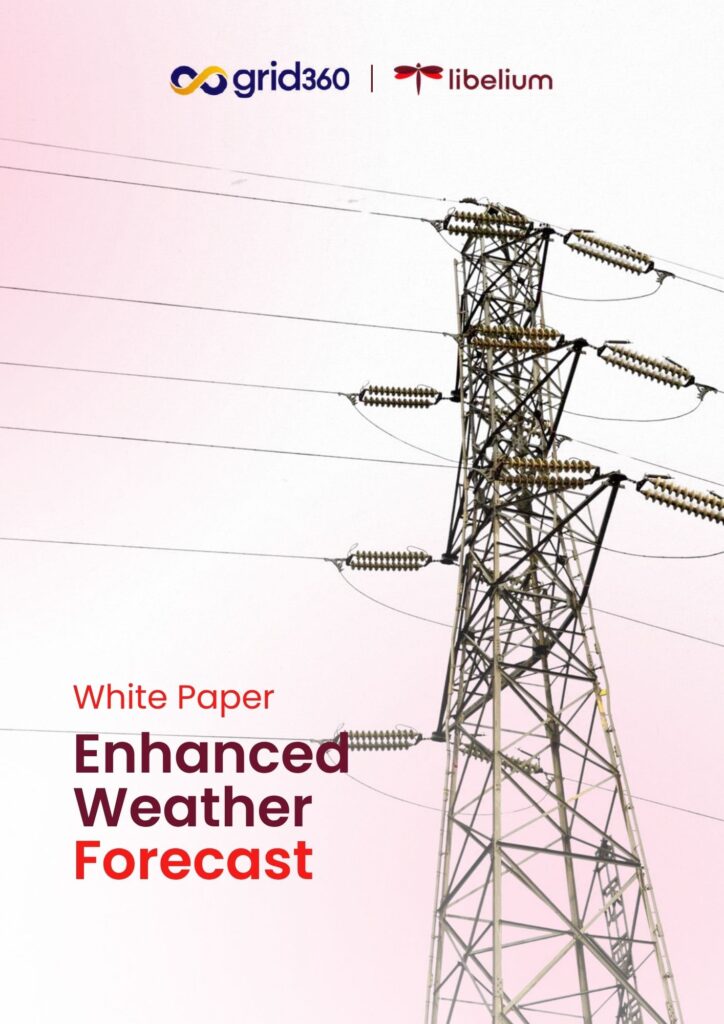Increase your network capacity by up to 30% without major investments.
Plan energy transfer with up to 7 days of precision.
100% autonomous, self-powered, and easy-to-install solution.
Maximum Efficiency, Minimal Environmental Impact
Revolutionizing energy efficiency. Smarter, more sustainable and cost-effective energy for a brighter future.
Calculation of power line temperature
The most direct, most economical alternative with the lowest environmental impact.

Most power line infrastructure operates at less than half capacity.
The emergence of renewables implies a change in operations. Aging infrastructure and operations. Large investments.
Expand the capacity of their transmission systems without raising the budget or putting their existing infrastructure at risk. The need for rapid implementation contrasts with lengthy planning periods that typically take years.
The Energy Challenge:
How to increase capacity without risks or high costs?
Energy companies face a significant challenge: the growing electricity demand, driven by sectors such as artificial intelligence and the expansion of renewable energy. This forces companies to increase the capacity of their transmission networks to accommodate the new energy flow.
By 2040, more than 2,000 GW of renewable energy will need to be integrated, requiring an expansion of transmission and distribution networks by between 20% and 65%. However, the required rate of growth is much greater than the expansion capacity of traditional infrastructures, which are costly, slow, and risky.
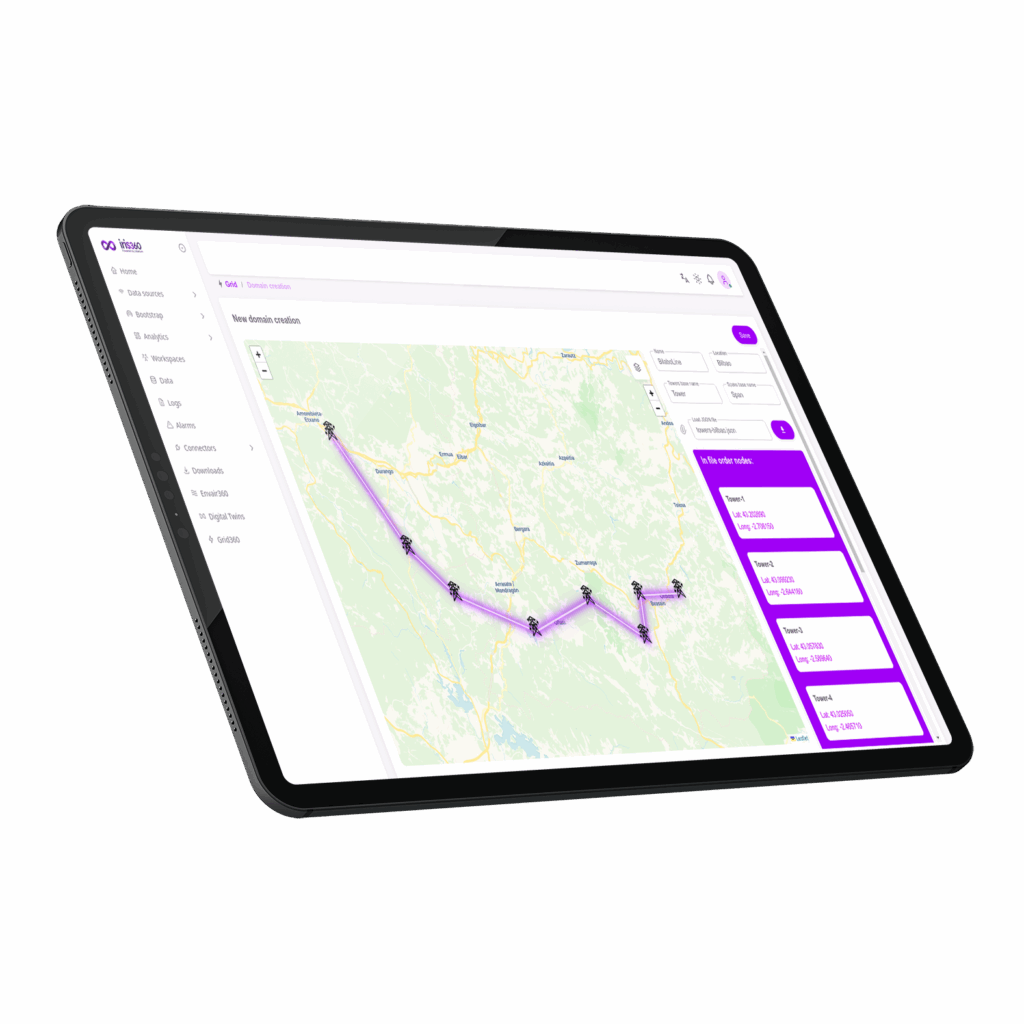
The Energy Challenge:
How to increase capacity without risks or high costs?
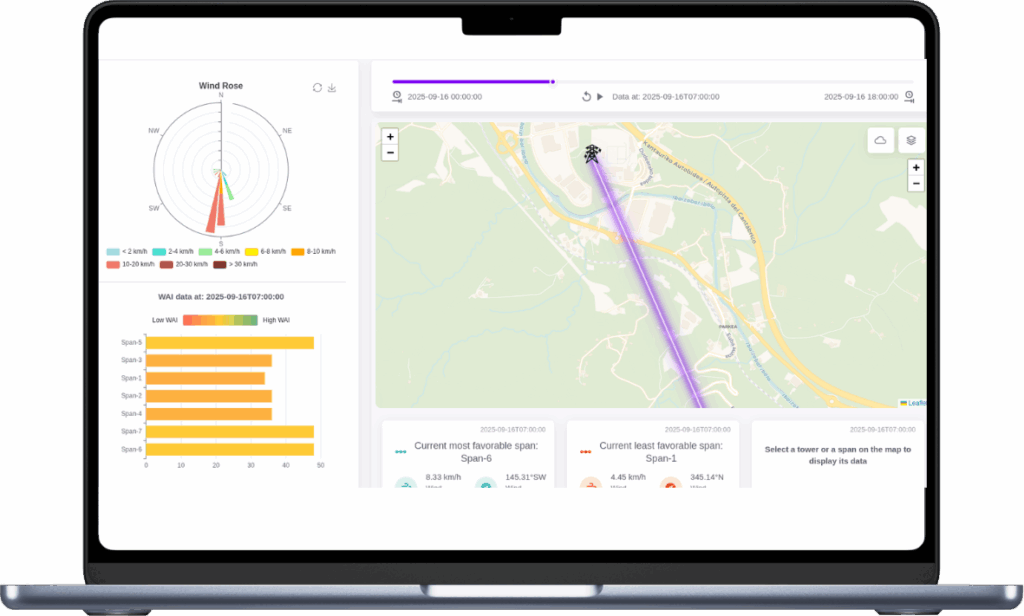
Energy companies face a significant challenge: the growing electricity demand, driven by sectors such as artificial intelligence and the expansion of renewable energy. This forces companies to increase the capacity of their transmission networks to accommodate the new energy flow.
By 2040, more than 2,000 GW of renewable energy will need to be integrated, requiring an expansion of transmission and distribution networks by between 20% and 65%. However, the required rate of growth is much greater than the expansion capacity of traditional infrastructures, which are costly, slow, and risky.
The Solution:
grid360 optimising grid performance without expansion
This is where grid360 offers an innovative and efficient solution. Instead of building new networks or undertaking costly expansions, grid360 allows you to optimise your existing infrastructure, increasing its transmission capacity without risk or additional investment. The solution combines high-precision IoT technology and a digital twin of the weather conditions.
How do we do it?
- Device management
- Remote configuration Information
- Updating and customizing views
- Visualization
Use of real-time meteorological data. Of all environmental conditions, wind is the most influential on line power capacity.
and Digital Twin
Allows identification of the most decisive DLR zones and determines the electrical power that can be injected into the infrastructure. It is possible to visualise the predicted DLR for the next 72 hours.
An advanced method for calculating the transport capacity of power lines in real-time. Allows for more efficient and optimised management of electrical networks.

grid360: AI + IoT = Key Benefits
Journey through the grid360 module
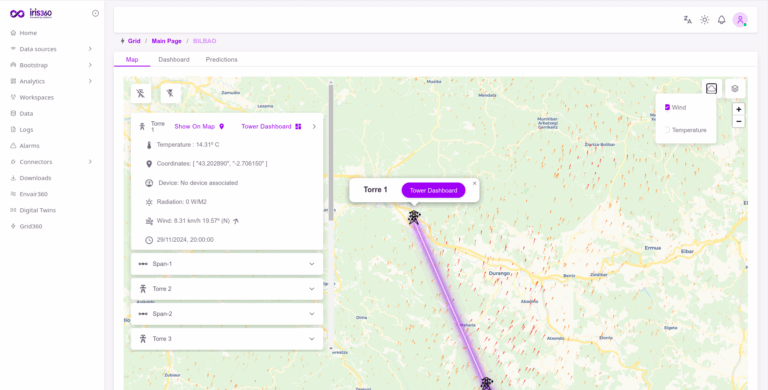
Provide an interactive, geospatial view of all monitored power lines, enabling intuitive and efficient grid management.
What can the user do?
→ Explore an interactive map displaying all available lines.
→ Select a line to access detailed parameters, devices, and predictions.
→ Create new lines by defining towers and spans and view devices associated with each tower or line segment.
→ Enable weather layers such as wind, temperature, or solar radiation.
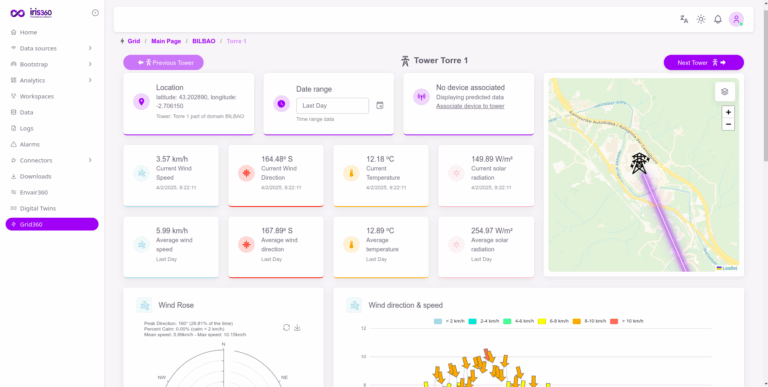
Give users a complete overview of the line’s status, towers, and spans, with key indicators that influence power transmission.
What can the user do?
→View key metrics for each span: Wind speed, Temperature, Solar radiation, K-angle
→Explore historical trends for wind, temperature, and radiation.
→ Analyze span efficiency with performance indicators.
→Identify the most and least favorable segments for energy transmission.
→ Explore detailed dashboards at three levels:Line, Tower and Span
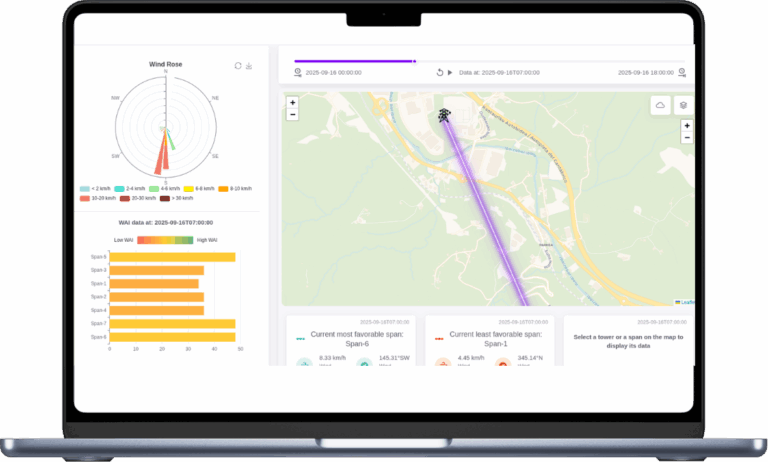
Allow users to anticipate how future weather conditions will impact the line’s transmission capacity.
Weather forecasting calibrated with hyper-local information from Weather Monitoring Systems deployed at power transmission towers. Provides forecast data with a 72–96 hour horizon, a temporal resolution of 20 minutes, and a spatial resolution of 1 kilometer.
What can the user do?
→ View weather forecasts for 96 hours, extendable up to 7 days.
→ Evaluate how climate conditions will affect line efficiency and potential energy loss.
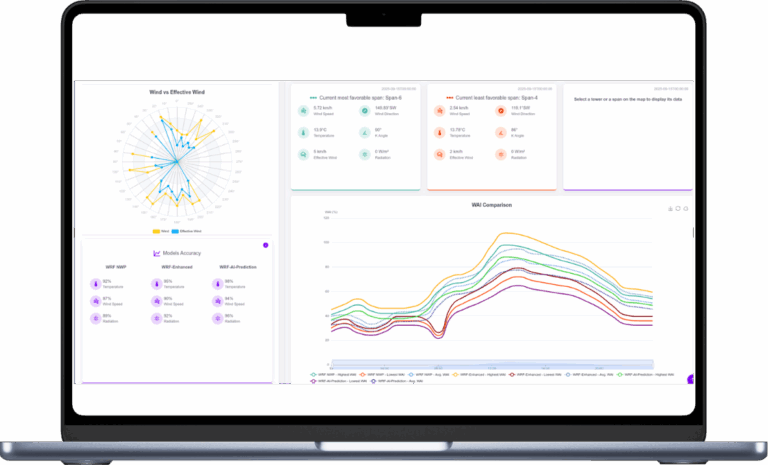
Our AI and ML algorithms go beyond mere efficiency; they are key to the early detection of anomalies, whether they are operational failures or indicators of potential cyberattacks. This ensures the integrity of both the process and the data.
What can the user do?
→ Optimize energy export planning between substations.
→ Identify the best operational windows based on future conditions.
→ Explore charts and predictive models to analyze different weather scenarios.
Why us
Libelium's grid360 solution
for Energy Transportation Efficiency
Improves DLR curve fitting by 60-70% using high-precision meteorological data.
Versatility in deployment and reduced inconvenience in start-up or relocation.
Allows optimal and flexible adjustment of the DLR by planning up to 7 days in advance.
Allows installation and operation without disconnecting the power line.
Predictively identifies periods suitable for on-site maintenance.
Generates local alarms and spatial prediction (Weather Ampacity Index) to optimize export.
Completes DLR curve in case of missing data.
Increase network capacity by up to 30% with lower implementation costs than traditional solutions.
We are here to help you with your project
If you’d like to learn more about how Libelium can benefit your city, contact us.

Global Senior Sales Manager, Critical Infrastructures

Business Development Manager
Trusted by companies of all industries and sizes
More than 18 years of experience in IoT support us.




